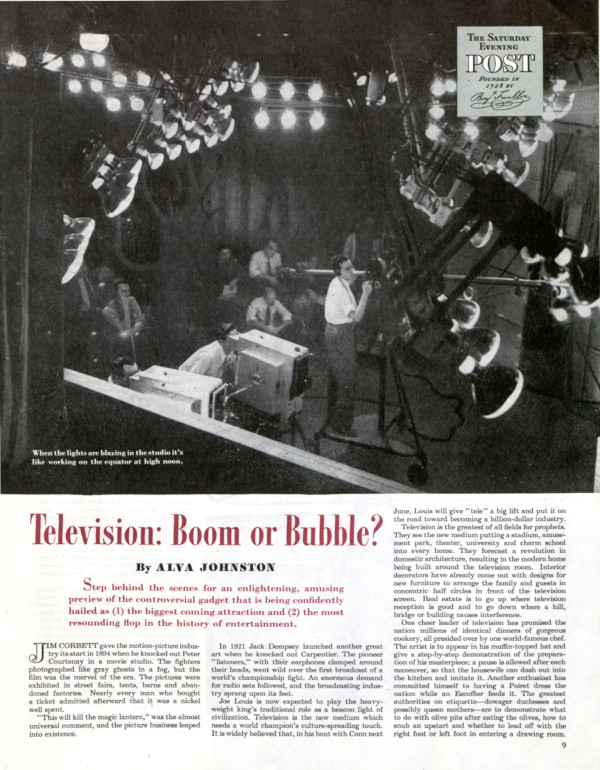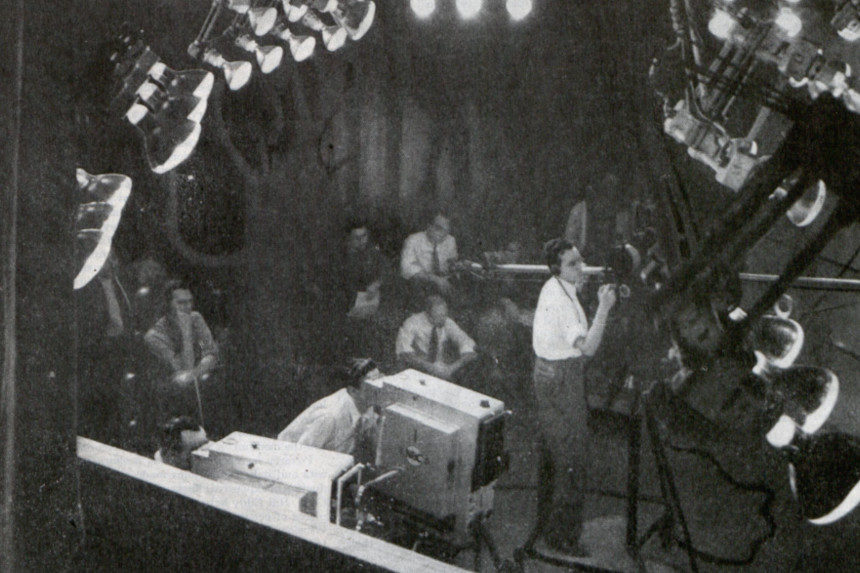Though the first television station in the U.S. was founded in 1928, the medium grew slowly for its first two decades. By the time that America entered World War II, a few of the handful of stations stopped broadcasting, and production of TVs was suspended for several years as factories pitched in for the war effort. However, after the war, both television station license applications and TV set sales blossomed. The first “permanent” TV network, the DuMont Television Network, launched in 1946, and others would soon follow.
In the midst of this sharp uptick in television interest, the Post launched a three-part series that ran across the March 9, March 16, and March 23, 1946 issues. Titled “Television: Boom or Bubble?”, the stories looked at different facets of America’s fascination with the tube. The first installment took on the bigger idea of TV, and in many cases compared it unfavorably to both movie-going and the experience of seeing sports in person. The story offers a real snapshot of the era, when no one seemed quite sure if this new program delivery system was going to take off or crash.

Become a Saturday Evening Post member and enjoy unlimited access. Subscribe now



